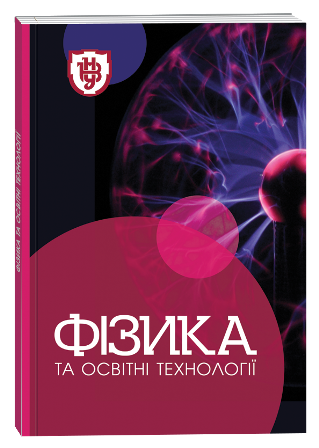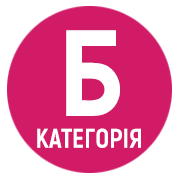INFLUENCE OF DEFECTS AND IMPURITIES ON THE STRUCTURE AND PROPERTIES OF CHALCOGENED SEMICONDUCTORS
DOI:
https://doi.org/10.32782/pet-2022-2-8Keywords:
chalcogenide semiconductor, point defect, structure model, broken bondAbstract
Multicomponent chalcogenide semiconductors are characterized by a high concentration of various types of defects. Effects induced by light (photocrystallization, photoinduced anisotropy, photoamorphization, increase in density of matter under illumination, photodarkening, and brightening) are the most common in chalcogenide glasses and cause structural transformations and the emergence of defect states. Photoinduced phenomena and corresponding structural changes in chalcogenide glasses are theoretically grounded on the based of charged bond defects, which are of three types: D+, D−, and D0. A point defect in the form of an atom with a broken bond may contain no electrons at the breaking point (D+), have one electron (D0) or two electrons (D-). Point defects with a broken bond are responsible for a large number of electronic transitions that cause luminescence, optical absorption, thermal excitation, and recombination. The structural ordering and properties of crystalline materials are determined by the presence of equilibrium and nonequilibrium lattice defects in them. In particular, the plastic deformation of crystals is reduced to the movement of various lattice defects, the thermal expansion of crystals is caused not only by the anharmonicity of atomic vibrations, but also by the increase in the concentration of crystal lattice defects. The works devoted to the study of the effect of γ-irradiation on the optical and electrical properties of semiconductors were analyzed. It was established that an increase in the irradiation dose leads to a decrease in the intensity of photoluminescence in both crystalline and vitreous samples. Selenide glasses and crystals turned out to be particularly sensitive to the influence of radiation. The study of defect formation processes in chalcogenide semiconductors creates new opportunities for the synthesis of promising materials in optoelectronic technology.
References
Мотт Я., Дэвис Э. Электронные явления в некристаллических веществах. М.: Мир, 1982. 664 с.
Brinza M. , Benkhedir M. L. , Willekens J. [and others] Photoconductivity methods in materials research . J. Mater. Sci. Mater. Elect. 2005. Vol. 16. P. 703–713.
Zakery A., Elliott S. R. Optical Nonlinearities in Chalcogenide Glasses and their Applications. Berlin, Heidelberg : Springer, 2010. 202 p.
Tanaka K., Kyohya S., Odajima A. Anomaly of the thickness dependence of photodarkening in amorphous chalcogenide films. Thin Solid Films. 1984. V. 111. P. 195–200.
Kuzukawa Y., Ganjoo A., Shimakawa K. Photoinduced structural changes in obliquely deposited As- and Ge-based amorphous chalcogenides: correlation between changes in thickness and band gap. J. Non Cryst. Solids. 1998. V. 227–230. P. 715–718.
Street R. A. Non-radiative recombination in chalcogenide glasses / Sol. Stat. Comm. 1977. Vol. 24. P. 363–365.
Toyosava N., Tanaka K. Photocurrent enhancement in light-soaked As2S3 glass Sol. Stat. Comm. 1996. Vol. 97. P. 623–626.
Anderson P. W. Model for the Electronic Structure of Amorphous Semiconductors / Phys. Rev. Lett. 1975. Vol. 34, N°15. P. 953–955.
Street R. A. , Mott N. F. . States in the Gap in Glassy Semiconductors / Phys. Rev. Lett. 1975. Vol. 35, № 19. P. 1293–1296.
Mott N. F. , Davis E., Street R. . States in the gap and recombination in amorphous semiconductors /. Phil. Mag. 1975. Vol. 32, N°5. P. 961–996.
Shpotyuk M. V. , Shpotyuk O. I. , Cebulski J., Kozyukhin S. Destructive clustering of metal nanoparticles in chalcogenide and oxide glassy matrices / Nanoscale Res. Lett. 2016. Vol. 11. P. 34-1–34-6.
Gushchin A. L. , Rogachev A. V. , Fomenko Y. S. , Sokolov M. N. Chalcogenide Cluster Complexes of Group Five Transition Metals: Synthetic and Structural Aspects / J. Struct. Chem. 2019. Vol. 60 (10). P. 1531–1577.
Конорова Л. Ф. , Ким Т. И. , Жданович Н. С. , Литовский М. А. Влияние γ-квантов на ИК поглощение в халькогенидных стеклообразных сплавах. Ж. техн. физ. 1985. Vol. 55(4). P. 788–791.
Конорова Л. Ф. , Жданович Н. С. , Дидик В. А., Прудников И. М. О структурных изменениях в стеклообразном AsGeSe, облученном большими дозами нейтронов / ФТП. 1989. Vol. 23(4). P. 706–709.
Конорова Л. Ф. , Жданович Н. С. Влияние нейтронного облучения на инфракрасное поглощение в стеклообразном трисульфиде мышьяка. ФТП. 1993. Vol. 27(3). P. 470–473.
Конорова Л. Ф. , Ким Т. И. , Жданович Н. С. , Литовский М. А. . Влияние γ-квантов на ИК поглощение в стеклообразном AsGeSe, содержащим металлы / ФТП. 1987. Vol. 21(7), P. 1300–1302.
Shpotyuk M. , Shpotyuk O. , Golovchak R. , McCloy J. , Riley B. Compositional trends of γ-induced optical changes observed in chalcogenide glasses of binary As-S system / J. Non Cryst. Solids. 2014. Vol. 386. P. 95–99.
Shpotyuk M. , Kovalskiy A. , Golovchak R. , Shpotyuk O. Phenomenology of γ-irradiation-induced changes in optical properties of chalcogenide semiconductor glasses: A case study of binary arsenic sulfides . J Non Cryst Solids. 2018. Vol. 498. P. 315–322.
Kolomiets B. T. , Mamontova T. N. , Domoryad I. A. , Babaev A. A. Photoluminescence in γ-irradiated vitreous and monocrystalline As2S3 and As2Se3 / Phys. Stat. Sol. (a). 1971. Vol. 7. P. K29–K32.








